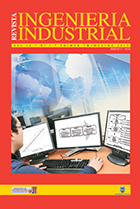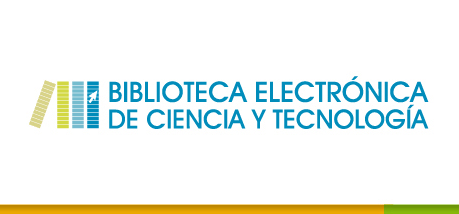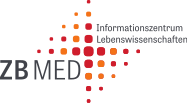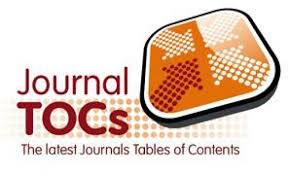Proposta de um método de gestão da satisfação dos clientes baseado em normas setoriais
Palabras clave:
ISO 9001, ISO/TS 16949, NBR 15100, satisfação de clientes, customer satisfaction.Resumen
O objetivo deste estudo é propor um método de gestão da satisfação dos clientes que integre as necessidades de diferentes setores industriais atendidos pela indústria siderúrgica nacional: setor aeroespacial, que inclui os fabricantes nacionais e internacionais de componentes para aviação; o setor de autopeças, no caso fabricantes de componentes para a indústria automotiva; e outros setores como o de máquinas e de pequenos fabricantes de peças metálicas (dobras, perfuração e usinagem de metais). Em geral, três padrões de sistemas de gestão são utilizados por essas indústrias: a norma de qualidade ISO 9001, a ISO/TS 16949 e a NBR15100. Apesar de conceitualmente essas normas focarem no atendimento de requisitos para um sistema de gestão da qualidade, há especificidades setoriais a serem atendidas pela organização. Tendo como pano de fundo essas normas, o método de pesquisa aplicado constituiu-se de um modelo conceitual-teórico dos sistemas de gestão do desempenho de campo de produtos e da satisfação de clientes. Cada setor tratado envolve particularidades na coleta e a análise sistemas de gestão do desempenho de campo de produtos e da satisfação de clientes. O resultado deste trabalho foi propor um método de gestão da satisfação de clientes composto por catorze passos, os quais possibilitam a gestão das informações necessárias ao controle de processos relacionados aos clientes, bem como dar suporte à espiral de melhoria dos produtos, processos e serviços fornecidos pela organização.
The objective of this study is to propose a customer satisfaction management method that integrates the needs of different industrial sectors domestic steel industry: aerospace, which includes national and international manufacturers of components for aviation; the auto parts industry, where manufacturers of components for the automotive industry; and other sectors such as machinery and small manufacturers of metal parts (bending, drilling and machining of metals). In general, three patterns of management systems are used by these industries: the quality standard ISO 9001, ISO / TS 16949 and the NBR15100. Although conceptually these standards focus on meeting requirements for a quality management system, there are sectorial specificities to be met by the organization. Against the background of these standards, the applied research method consisted of a conceptual-theoretical model of the product field performance management systems and customer satisfaction. Each treaty particular sector involves the collection and analysis products of field performance management systems and customer satisfaction. The result of this work was to propose a method of managing customer satisfaction consists of fourteen steps which enable the management of information necessary to control processes related to customers and support the spiral of improvement of products, processes and services provided by the organization.
Descargas
Citas
AHSEN, Anette Von., and FUNCK, Dirk. Integrated Management Systems – Opportunities and Risks for Corporate Environmental Protection. Corporate Environmental Strategy, 2001, vol.8, no2, p. 165-176.
ASSOCIAÇÃO BRASILEIRA DE NORMAS TÉCNICAS (ABNT). NBR ISO 10002:2005. Gestão da qualidade - Satisfação do cliente - Diretrizes para o tratamento de reclamações nas organizações. Rio de Janeiro, 2005.
ASSOCIAÇÃO BRASILEIRA DE NORMAS TÉCNICAS (ABNT). NBR ISO 9001:2008. Sistemas de Gestão da Qualidade – Requisitos. Rio de Janeiro, 2008.
ASSOCIAÇÃO BRASILEIRA DE NORMAS TÉCNICAS (ABNT). NBR ISO/TS 16949:2009.Sistemas de Gestão da Qualidade – Requisitos particulares para aplicação da ABNT NBR ISO 9001:2008 para organizações de produção automotiva e peças de reposição pertinentes. Rio de Janeiro, 2009.
ASSOCIAÇÃO BRASILEIRA DE NORMAS TÉCNICAS (ABNT). NBR 15100:2010. Sistemas de Gestão da Qualidade – Requisitos para Organizações de Aeronáutica, Espaço e Defesa. Rio de Janeiro, 2010.
BENNER, M.J., and VELOSO, F.M. ISO 9000 practices and financial performance: A technology coherence perspective. Journal of Operations Management, 2008, vol.26, p.611–629.
BERNARDO, M., MARTI CASADESUS, M., STANISLAV- KARAPETROVIC, S., and HERAS, I. Relationships between the integration of audits and management systems, The TQM Journal, 2010, vol. 23, no 6, p.659–672. doi: http://dx.doi.org/10.1108/17542731111175266.
CARPINETTI, L.C.R., MIGUEL, P.A.C., and GEROLAMO, M.C. Gestão da Qualidade ISO 9001:2008 – Princípios e Requisitos. São Paulo: Atlas, 2009. 110 p. ISBN: 978-8522-46504-0.
FERREIRA, J.J.A. Modelos Normativos. In: PALLADINI, Edson Pacheco., and CARVALHO, Marly Monteiro. (coord). Gestão da Qualidade – Teorias e Casos. Rio de Janeiro: Elsevier Editora Ltda, 2005. 355 p.
FLANAGAN, J.C. The Critical Incident Technique. Psychological Bulletin, 1954, vol. 51, no 4, p. 28-40.
FORNELL, Claes. A National Customer Satisfaction Barometer: The Swedish Experience. Journal of Marketing, 1992, vol. 56, no 1, p. 6-21.
FORNELL, Claes., ANDERSON, Eugene W., and DONALD, R. Lehmann. Customer Satisfaction, Market Share, and Profitabilty: Findings from Sweden. The Journal of Marketing, 1994, vol. 58, no3, p. 53-66.
FORNELL, et al. The American Customer Satisfaction Index: Nature, Purpose, and Findings. The Journal of Marketing, 1996, vol. 60, no4. p. 7-18.
FUNCK, D., MAYER, M., and SCHWENDT, S. Integrated Management Systems in the Light of International Expert Interviews. Present Situation and Further Development in the Trade and Service Sector. IMS Research Report, 2001,n.3. Gottingen.
GONZÁLEZ, A.J.F., and PRADO, J.C. Measurement and analysis of customer satisfaction: company practices in Spain and Portugal. International Journal of Productivity and Performance Management, 2007, vol. 56, p. 500-517.
GRIFFITH, A., and BHUTTO, K. Improving environmental performance through integrated management systems (IMS) in the UK. Management of Environmental Quality: An International Journal, vol. 19, no. 5, 2008, pp. 565-578.
HAYES, B. E. Medindo a Satisfação do Cliente – Desenvolvimento e uso de questionários. Rio de Janeiro: Qualitymark Editora, 1995, 288 p.
HAYES, B. E. Measuring Customer Satisfaction and Loyalty: Survey, design, use and statistical analysis methods – 3 ed. Milwaukee, WI: Quality Press, 2008, 287p.
HILL, N., SELF, B., and ROCHE, G. Customer Satisfaction Measurement for ISO 9000:2000. Owford: Butterworth-Heinemann, 2002, 148 p.
HOFFMAN, K.D., BATESON, J.E.G., IKEDA, A.A., and CAMPOMAR, M.C. Princípios de Marketing de Serviços: Conceitos, Estratégias e Casos. Trad. 3ª Ed. São Paulo: CENGAGE Learning, 2009. 600 p.
JONKER, J., and KARAPETROVIC, S. (2004). Systems thinking for integration of management systems. Business process management journal, 10(06), 608-615.
JØRGENSEN, T. H., MELLADO, M.D., and REMMEN, A. Integrated Management Systems – Three Different Levels of Integration. Journal of Cleaner Production, 2006, vol. 14, no8, p.712-722.
KARAPETROVIC, S. Musings on integrated management systems. Measuring Business Excellence, 2003,vol. 7, no1, p. 4-13.
KARAPETROVIC, S., and WILLBORN, W. Integration of quality and environmental management systems. The TQM Magazine, 1998,vol.10, no3, p. 204-213.
KARTHA, C.P. A comparison of ISO 9000:2000 quality system standards, QS9000, ISO/TS 16949 and Baldrige criteria. The TQM Magazine, 2004, vol. 16, no 5, p.331–340.
KHANNA, H.K., LAROIYA, S.C., and SHARMA,D.D. Integrated management systems in Indian manufacturing organizations. The TQM Journal, 2010, vol. 22, p. 670–686. doi: http://dx.doi.org/10.1108/17542731011085339.
KUC, T. The impact of ISO 9000 quality management systems on manufacturing. Journal of Materials Processing Technology, 2007, vol. 186, p. 207–213.
LEOPOULOS, V., VOULGARIDOU, D., and BELLOS, E. Integrated management systems: moving from function to organisation/decision view. The TQM Journal, 2009, vol. 22, p. 594–628.
MACHADO, M. C. Qualidade na Indústria Aeronáutica. In: OLIVEIRA, Otávio J. (org). Gestão da Qualidade – Tópicos Avançados. São Paulo: Editora Cengage Learning, 2004. 243p.
MAJSTOROVIC, V., and MARINKOVIC, D.V. The development of Business Standardization and Integrated Management Systems. Journal of Medical Biochemistry, 2011, vol. 30, n.4, p. 334-345.
MELLO, C.H.P. ISO 9001:2008 Sistema de Gestão da Qualidade para Operações de Produção e Serviço. São Paulo: Ed. Atlas, 2009. 239p.
PARASURAMAN, A., and ZEITHAML, V.A. SERVQUAL: A Multiple-Item Scale for Measuring Consumer Perceptions of Service Quality. Journal of Retailing, 1988,vol. 64, no1.
RENFREW, D., and MUIR, G. Quenching the thirst for Integration. Quality World, 1998, vol. 24, no8. p.10-13.
SAMPAIO, P., SARAIVA, P., RODRIGUES, A.G. ISO9001 certification research: questions, answers and approaches. International Journal of Quality & Reliability Management, 2008, vol. 26, no1, p. 38-58.
STAMATIS, D.H. Integrating ISO9001:2000 with ISO/TS 16949 and AS9100. Milwaukee, Quality Press, 2004. 390p.
TERLAAK, A.; KING, A.A.The effect of certification with the ISO 9000 Quality Management Standard: A signaling approach. Journal of Economic Behavior & Organization, 2006, vol. 60, p. 579–602.
VANAGAS, P., and ZIRGUTINE, S. TQM Paradigm Shift in the Context of Change Management. Engineering Economics, 2005, vol. 43, no3, p. 42-48.
VITORELL, G.A.; CARPINETTI, L.C.R. Análise da integração dos sistemas de gestão normalizados ISO 9001 e OHSAS 18001: Estudo de casos múltiplos, Gest. Prod., São Carlos, 2013, vol. 20, no1, p. 204-217.
WILKINSON, G., and DALE, B.G. Models of Management Systems Standards: a review of the integration issues. International Journal of Management Reviews, 1999, vol.1, p. 279-298.
WILKINSON, G., and DALE, B.G. Integrated Management Systems. In: DALE B.G (ed): Manageing Quality. Fourth Edition, 2002.
ZUTSHI, A., and SOHAL, A.S. Integrated management system: The experiences of three Australian organisations, Journal of Manufacturing Technology Management, 2005, vol. 16 no 2, p.211 – 232.
Descargas
Publicado
Número
Sección
Licencia
Revista Ingeniería Industrial by Revista Ingeniería Industrial is licensed under a Creative Commons Reconocimiento 4.0 Internacional License. Creado a partir de la obra en revistas.ubiobio.cl/index.php/RI/. Puede hallar permisos más allá de los concedidos con esta licencia en http://revistas.ubiobio.cl/index.php/RI/about/

















